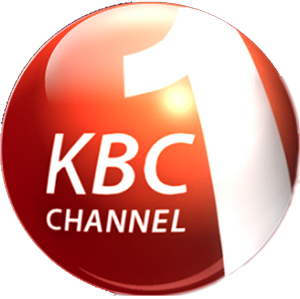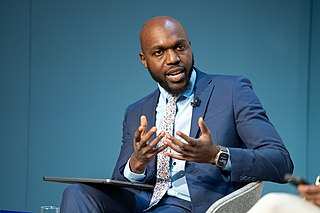Telecommunications in Kenya include radio, television, fixed and mobile telephones, and the Internet.

Kenya Broadcasting Corporation (KBC) is the state-run media organisation of Kenya. It broadcasts in English and Swahili, as well as in most local languages of Kenya.

The mass media in South Africa has a large mass media sector and is one of Africa's major media centres. While South Africa's many broadcasters and publications reflect the diversity of the population as a whole, the most commonly used language is English. However, all ten other official languages are represented to some extent or another. Afrikaans is the second most commonly used language, especially in the publishing sector.
As of the early 2000s, Sudan had one of the most restrictive media environments in Africa. Sudan's print media since independence generally have served one of the political parties or the government in power, although there occasionally were outspoken independent newspapers.
The mass media in Mali includes print, radio, television, and the Internet.

Mass media in Sierra Leone began when the first modern printing press in Africa arrived at the start of the 19th century. In the 1860s the country became a journalist hub for Africa with professional travelling to the country from across the continent. At the end of the 19th century the industry went into decline and when radio was introduced in the 1930s this became the primary communication media. Print media is not widely read in Sierra Leone, especially outside Freetown, partially due to the low levels of literacy in the country. In 2008 there were 15 daily newspapers in addition to those published weekly. Among newspaper readership young people are likely to read newspapers weekly and older people daily. The majority of newspapers are privately run and are often critical of the government.

Television, magazines, and newspapers have all been operated by both state-owned and for-profit corporations which depend on advertising, subscription, and other sales-related revenues. Even though the Constitution of Russia guarantees freedom of speech, the press has been plagued by both government censorship and self-censorship.
As in many developing countries, radio reaches the widest audience in Haiti. Estimates vary, but more than 300 radio stations are believed to broadcast throughout the country. Talk show programs serve as one of the few ways in which ordinary Haitians can speak out about politics and the government. A law passed in 1997 declares the airwaves to be the property of the government, but at least 133 unlicensed radio stations operate freely. In addition, there are 50 community-based stations throughout the country.
The mass media in Iraq includes print, radio, television, and online services. Iraq became the first Arab country to broadcast from a TV station, in 1954. As of 2020, more than 100 radio stations and 150 television stations were broadcasting to Iraq in Arabic, English, Kurdish, Turkmen, and Neo-Aramaic.

Mass media in the Democratic Republic of the Congo are nationally and internationally state-owned and operated.
Mass media in Ivory Coast is controlled by the government. Audiovisual communications are regulated by the Conseil national de la communication audiovisuelle (CNCA), an administrative arm of the national government.
The mass media in South Sudan is underdeveloped compared to many other countries, including fellow East African states like Kenya, Tanzania, and Uganda. Poor transportation infrastructure and entrenched poverty in the country inhibit both the circulation of newspapers, particularly in states located far from the capital of Juba, and the ability of media outlets to maintain regular coverage of the entire country.

The mass media in Uganda includes print, television, radio and online sectors, and coverage is split between both state-run outlets and privately held outlets as well as English-language outlets and Luganda-language outlets.

Vincent Makori is the anchor of Africa 54, Voice of America’s English television live news magazine show that broadcasts daily from Washington D.C. The program brings information about Africa, the United States, and the world to viewers across Africa.
Kenyan reggae is mainly a fusion of Jamaican reggae and local ethnic singing styles that incorporate Lingala, benga and Kenyan hip hop.

Larry Madowo is a CNN International Correspondent and host of the African Voices Changemakers and Playmakers series. He was previously a North America Correspondent for the BBC and also anchored breaking news and presented BBC World News America from Washington, DC. He was a 2019-20 Knight-Bagehot Fellow in Economics and Business Journalism at Columbia University in New York and the BBC Africa Business Editor until 2019. He is a reporter, broadcaster, writer and news anchor whose range includes business, technology, current affairs, politics and popular culture. His work has been featured on major global outlets including the BBC, CNN International, the Washington Post, and the Guardian.
The Sultanate of Oman, established on August 9, 1970, is an absolute monarchy in which all the power resides with the sultan. The government controls what information the mass media relays, and the law prohibits any criticism of the Sultan or government.
Peninnah Gathoni Muchomba popularly known as Gathoni Wa Mucomba is a Kenyan journalist, entrepreneur and politician. She is the Member of Parliament for Githunguri Constituency in the bicameral Kenyan parliament since 2022 and a member of the ruling party, UDA. She formerly vied and won the Kiambu women representative post in the 2017 General election. Gathoni garnered 922,829 votes from Kiambu county constituents becoming the third highest candidate with the majority votes after President Uhuru Kenyatta and the former Prime Minister Raila Odinga.
Lulu Khadija Hassan is a Kenyan journalist, news anchor, producer, and CEO of Jiffy Pictures. She hosts the Nipashe Wikendi news bulletin on Citizen TV, alongside Rashid Abdalla. The bulletin is broadcast in Swahili and airs on Saturday and Sunday.









